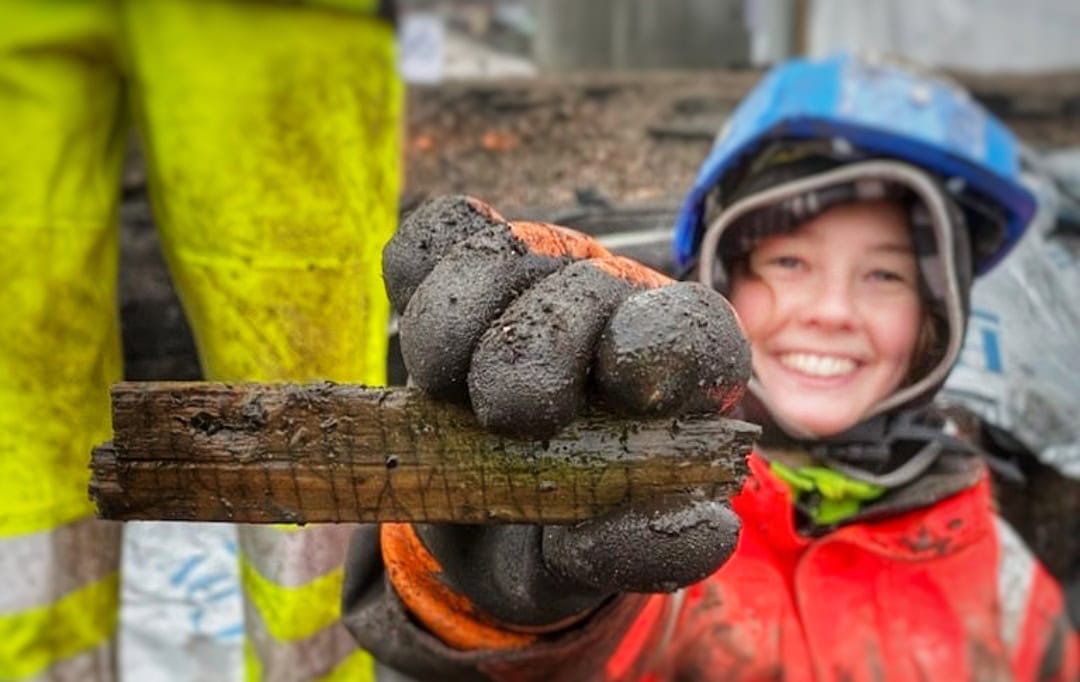In the last week before Christmas two runic inscriptions were unearthed during excavations in Oslo’s old town. One inscription is carved on bone and this is the first bone with runes found in Oslo in more than forty years. The second is carved on wood and contains a religious text in both Norse and Latin.
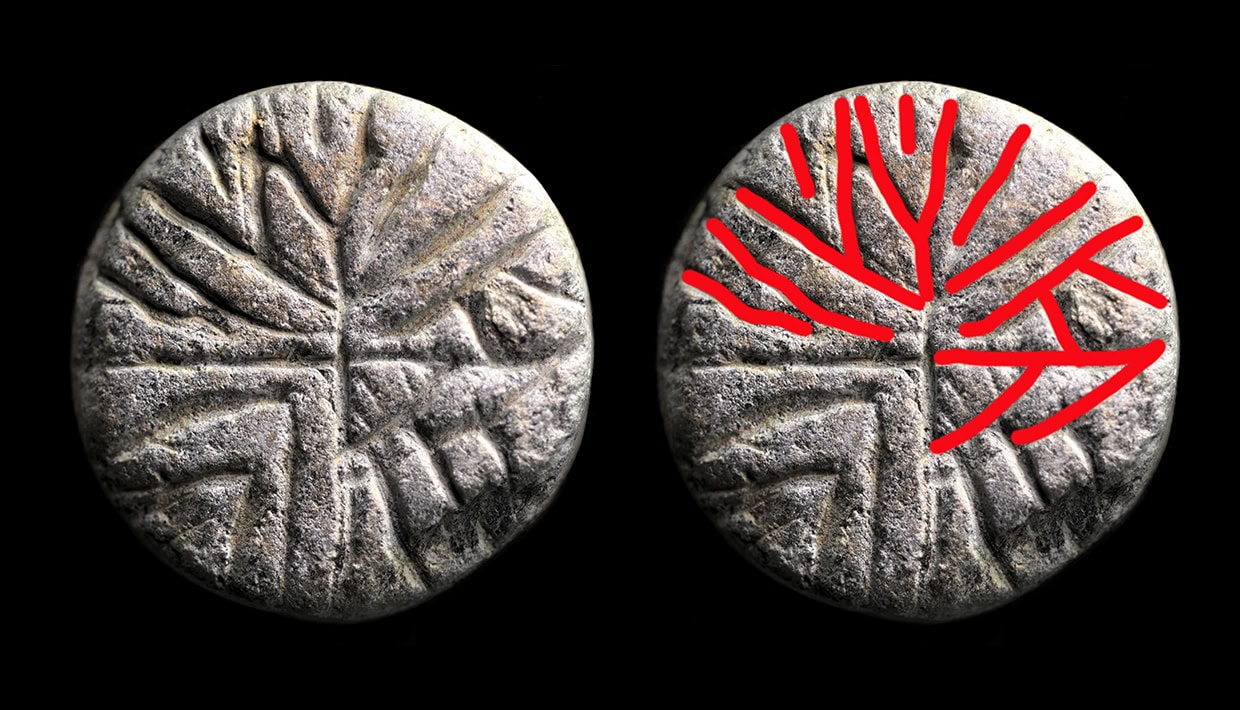
Medieval gaming piece with runic inscription found in Trondheim
When archaeologists from The Norwegian Institute for Cultural Heritage Research conducted a last-minute excavation in Medieval Trondheim last year due to a broken sewer pipe, a surprise find was made. A soapstone gaming piece bearing a runic inscription.
Much of the remains of medieval Trondheim have been excavated or otherwise removed many years ago, but there is still plenty left. Due to the broken sewer pipe, a four-metre-long strip of these historic layers had to be excavated – and it turned out to contain more than anticipated.
“Underneath what appeared to be a stretch of timbers from a street was a deep pit. The bottom of this pit, four metres below today’s surface, had a layer of birch bark that has been dated 1000-1150 AD. A sample from a layer of charcoal near the top of the pit has been dated to 1030-1180 AD. These date the pit to the end of the Viking age or the early Medieval period in Norway”, says archaeologist Dag-Øyvind Engtrø Solem.
There were many finds discovered in the layers between these two. Among them was the beautiful gaming piece.
“We saw the gaming piece at the same time, and we got really excited”, says archaeologist Guro Skogvold.
Not only was the small object decorated with carvings resembling a flower pattern – some of them looked like they could be runes.
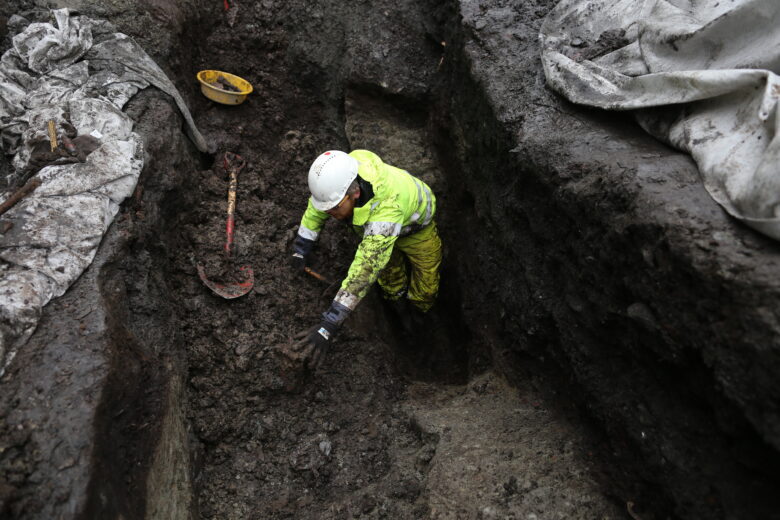
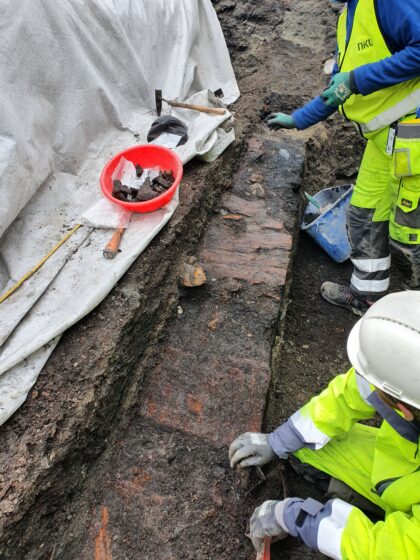
A brother in arms?
Pictures of the object were sent to runologist Karen Langsholt Holmqvist in Oslo. She found the object so interesting that she decided to come to Trondheim to see it for herself. And she could confirm that there was indeed a runic inscription there!
“At first glance, what you see is an uneven geometrical pattern, something that may look like a snowflake. But when I examined the game piece closer, I saw that some of the lines were carefully planned runes”, says Langsholt Holmqvist.
“Considering that the inscription follows the curve of the piece, the runes are bent and not immediately easy to see. But there is no doubt that these are runes” she continues.
Since the rest of the object was decorated with similar lines, the inscription was almost hidden. Maybe that was the point. And what does the inscription say?
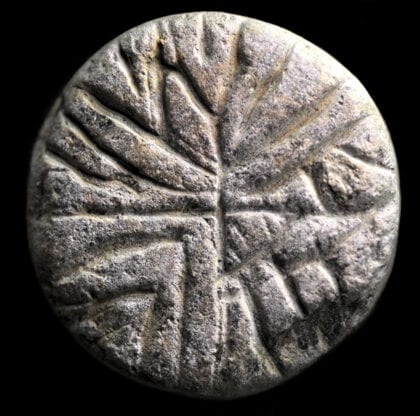
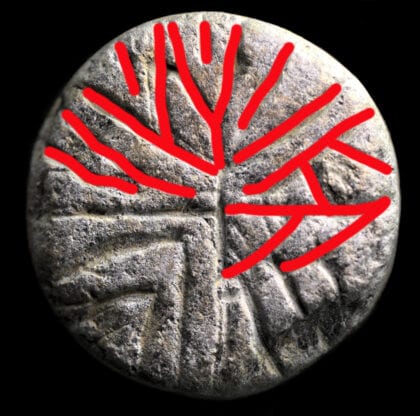
“The runes are actually easy to read once you see them”, says Langsholt Holmqvist. “They spell out siggsifr, which is almost certainly a previously unknown name, Sigsífr. Norse names are often combined by two parts, and Sig- is a quite common first part. We know it both from male and female first names, such as Sigbjørn and Sigurd, or Sigfrid and Sigrid. The second part, -síf, is previously only known from a couple of female names, Hildisif and Silkisif. But here it ends with an -r, which likely makes this a male name”.
“The combination of these parts might not be random. The first part means victory or battle, and the second part could mean brother. This might be a previously unknown name, meaning something like ‘Brother in Arms’. Was this the name of the owner of the gaming piece, or the person making the inscription?”, concludes Langsholt Holmqvist.
“Another theory could be that it is the name of the gaming piece itself”, adds Solem. “Extraordinary weapons are named in the sagas, so maybe extraordinary gaming pieces also were given names? ‘Brother Victory’ or ‘Battle Brother’ sound like fitting names for a gaming piece.”
The unusual find from Trondheim has only a few parallels elsewhere. A couple of gaming pieces have common names carved with runes on them, but it’s not easy to say whether they refer to the object or a person. But an early Medieval game piece from Bergen has the name Viking on it. And a partly preserved one from Tønsberg seems to have had the name Lóđurr inscribed on it, which is only known as the name of a God in Norse mythology. Maybe these finds could support the theory of named gaming pieces?


